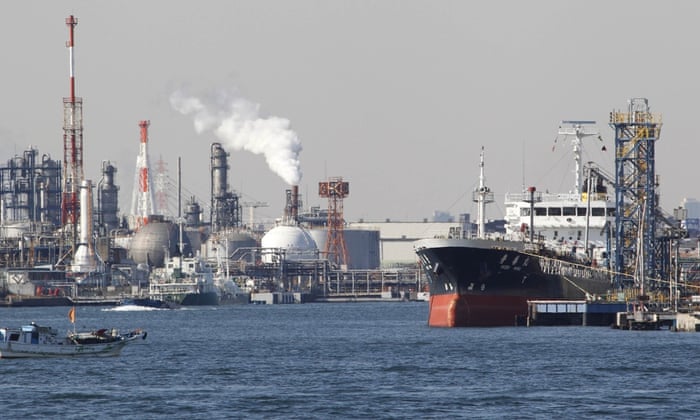Global carbon dioxide concentration hit record high in March, scientists say (400 ppm)
Recorded levels have not been seen at least since monitoring began – and probably in all of human history. What’s needed now is political will, says a researcher


Global average carbon dioxide concentration has hit a new high, researchers say. Photograph: Koji Sasahara/AP
Global average concentration of carbon dioxide in the atmosphere reached a new record high in March 2015, soaring to surpass 400 parts per million, scientists revealed on Wednesday.
The news came as a reminder that the international community has failed to come up with meaningful solutions to reverse the trend in greenhouse gas emissions that are a direct cause of global warming.
“I, and many other scientists, we are beginning to get worried. Because we see efforts that are not strong enough. We do not see the political will or the leadership to address this issue,” said James Butler, director of the global monitoring division at the US National Oceanic and Atmospheric Administration.
The average in atmosphere carbon dioxide concentration observed in March has not been seen by scientists since NOAA monitoring started in 1957.
And scientific evidence suggests that these levels have been unseen for the entire history of human civilization as we know it.
Babylonian, Chinese and western civilizations were able to develop during a time of climate stability marked by carbon dioxide concentration levels of 270 to 280 parts per million, Butler said.
With the dawn of the industrial age, carbon dioxide concentration levels in the atmosphere began to climb, going from 280 parts per million in 1800 to 290 parts per million in 1900. In the last century alone, the rise in concentration is one that would normally be expected to happen over the course of 10,000 or 20,000 years, Butler said – definitely not 100.
This March, the International Energy Agency reported that greenhouse gas emissions had plateaued over the last two years, stopping an upward trend.
Emissions may have stagnated, but the degree of carbon dioxide concentration in the atmosphere – a direct cause for global warming – is continuing to rise.
“Once you get carbon dioxide up in the atmosphere, it’s very difficult to make it go away,” Butler said.
Current global emissions would have to be reduced by a momentous 80% in order to stop carbon dioxide concentration in its upward trend. Even if emissions came to a halt altogether, it would likely take hundreds, if not thousands, of years for concentration levels to come back down to desirable rates.
Still, tools are in place for governments and industries to turn their backs on fossil fuels like oil, gas and coal, the burning of which is causing the emissions, Butler said.
Relying on a combination of alternative sources of power would stop emissions in their tracks, Butler said, citing geothermal, hydropower, agropower, wind energy and even controversial nuclear power as potential alternatives.
The main obstacle to this end so far seems to be a lack of mass mobilization.
“We put a man on the moon in nine years and we could hardly fly a rocket before that,” Butler said, referring to America’s successful Apollo 11 mission in 1969. “With the right kind of political will, there’s a lot that could get done.”
Comments